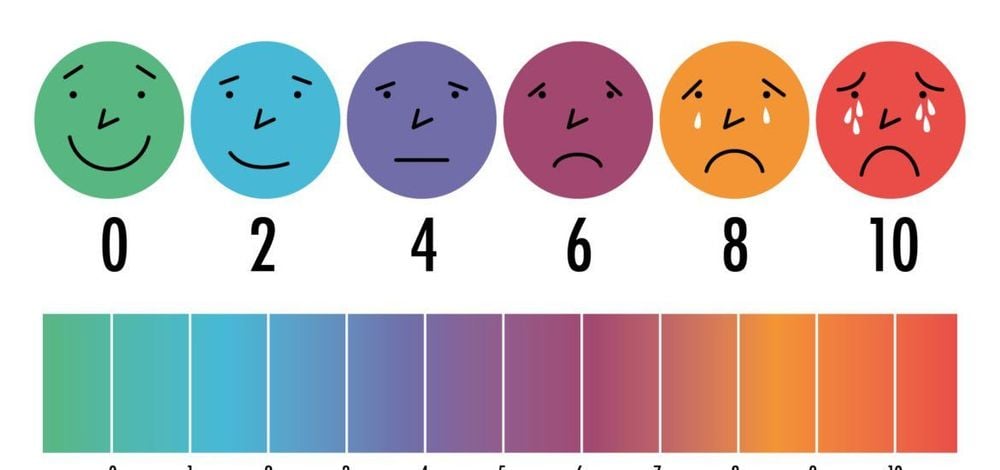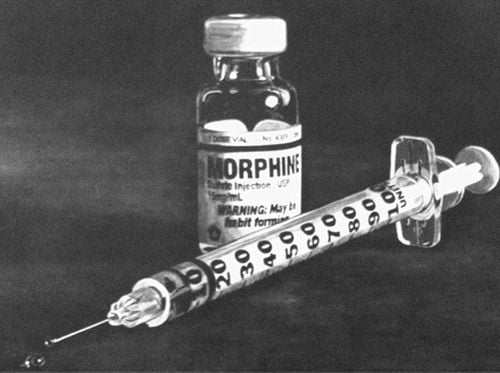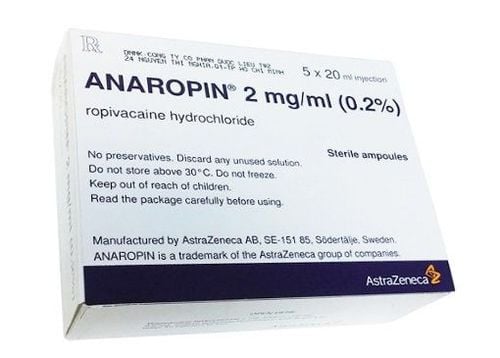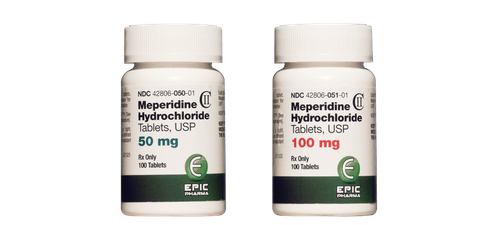This is an automatically translated article.
The article was professionally consulted by Specialist Doctor I Nguyen Duc Thong - Anesthesiologist - General Surgery Department - Vinmec Danang International Hospital.Postoperative analgesia is essential for every patient after surgery. The doctor will base on the patient's conditions to come up with the most effective post-operative pain relief regimen by choosing methods such as: Using pain relievers or regional anesthesia for the patient.
1. Why should pain relief treatment after surgery?
Pain after surgery is something that many patients fear from before surgery, a problem that affects patients' psychology before and after surgery. It can affect many organs such as respiratory, circulatory, endocrine, and suppresses the human body's immune system.The treatment of postoperative pain is not only about helping patients reduce the pain on the body after undergoing a surgery, but also related to professional ethics, doctors cannot be indifferent. before the patient has a painful expression and must find a way to help the patient.
If the patient is not treated for pain relief after surgery, it will cause many dangerous complications, which can be fatal if not treated promptly. If the pain turns to chronic pain, the patient will suffer from long-lasting pain that reduces quality of life. Therefore, pain relief after surgery is essential and important in the treatment of patients.
Pain relief after surgery will help patients move soon after surgery, help speed recovery, reduce hospital stay and reduce treatment costs. Patients can quickly return to normal daily life, ensuring the quality of work and life after recovery of the patient.

2. Evaluation of pain levels after surgery
Not all patients feel pain after each surgery, depending on the different situation, the pain level of each person will also be different. The assessment of the patient's pain level will partly help the doctor come up with the most effective postoperative pain management regimen for the patient.Each patient's pain level can vary by location such as upper thoracic and upper abdominal surgery more painful than lower abdominal surgery, peripheral and superficial surgery being rated as the least painful compared to the above two types.
In addition, the level of pain after surgery depends on the location, endurance, psychological factors of each patient: 15% of patients feel no pain or little pain after each surgery, 15% of patients Other patients will feel extreme pain after each similar surgery.
To assess the level of pain, doctors often use tools such as: EVA ruler or use a score scale to identify the level of pain.

3. Complications after surgery due to too much pain
Pain after surgery, if not treated promptly, can lead to many dangerous complications, even death. Pain after surgery causes disorders in many different organs as follows:Cardiovascular: Systemic vasoconstriction or coronary vasoconstriction, high blood pressure, easy to cause acute myocardial infarction. Respiratory system: Respiratory restriction increases the risk of atelectasis, decreased lung volume, pneumonia. Digestive system: Reduces gastric emptying time, reduces intestinal motility. Patients easily lose their appetite, may be paralytic or have constipation. Endocrine system: Changes in the release of many hormones, increased blood sugar, weight loss, muscle wasting, a patient's immune system is weakened, and surgical wounds are more difficult to heal.

4. Methods of pain relief after surgery
Postoperative analgesia is essential after most surgeries. However, depending on the pain level of each patient, the doctor will recommend the most appropriate postoperative pain management regimen.4.1 Oral analgesia
After surgery, for small, less painful surgeries, doctors often prescribe oral pain relievers. Oral analgesics are used for surgical patients who can go home the same day or are preferred for patients who have restored bowel movements.The most commonly used pain reliever is paracetamol - a drug with analgesic and antipyretic effects that can be used for all ages. Non-steroidal anti-inflammatory drugs are widely used in maxillofacial surgery, bone surgery, and obstetric surgery. These drugs have the effect of reducing pain, anti-swelling of the incision, so they are often used widely after surgery. However, anti-inflammatory painkillers often have side effects causing stomach ulcers, some drugs are contraindicated in patients with cardiovascular disease and children under 12 years of age. Therefore, it is necessary to weigh the advantages and disadvantages before using it.
Derivatives with central analgesic effect are often combined with paracetamol to increase analgesic effect such as codeine, caffeine, tramadol. In addition, slow oral morphine is also one of the commonly used analgesics in the treatment of postoperative pain.
4.2 Treatment of pain after surgery using oral drugs
Post-operative analgesia using intravenous drugs for non-morphine analgesics such as paracetamol and non-steroidal anti-inflammatory drugs (NSAIDs), can be combined with morphine in cases of postoperative pain. much pain.Administer drugs from the morphine family (Morphin, Fentanyl, Sufentanil, Remifentanyl) intravenously using patient-controlled analgesia (PCA), with regular infusion doses to ensure complete pain relief. , continuously, the patient can manually press the button to inject a pre-set amount of medicine to relieve pain as soon as the pain increases. The method of injecting pain medication into the patient's muscle is no longer recommended because it causes pain and hematoma after injection.

4.3 Pain relief with epidural anesthesia
4.3.1. Pain relief by neuraxial anesthesia, nerve trunk anesthesia, peripheral nerve anesthesia such as brachial plexus numbness, radial nerve numbness, ulnar nerve, sitting nerve, femoral nerve, nerve tibial nerve, pudendal nerve... At Vinmec, there are also complex regional anesthetic techniques that require high technology, such as: flat vertebral plane to relieve pain in chest surgery, including open heart surgery, lumbosacral anesthesia relieves lower abdominal pain, lumbar squamous muscle sphincter relieves pain after cesarean section and lower abdominal surgery.... Regional anesthesia is performed under ultrasound guidance and a nerve detector to ensure accuracy. , safe and highly effective.4.3.2. Epidural anesthesia method is increasingly chosen by many doctors to treat postoperative pain for patients. By keeping the epidural catheter in place for 48 to 72 hours, the doctor can continuously infuse local anesthetic to relieve prolonged postoperative pain. This method of pain relief is more effective than the above methods, especially when the patient coughs, moves or moves without pain. The use of morphine drugs for epidural infusion can cause side effects such as itching, nausea, urinary retention.
In addition to the above pain relief methods, a number of other methods are also used by doctors to treat postoperative pain for patients such as anal pain relievers, skin patches, and local anesthetic injections. , put anesthetic catheter into the incision right before closing the incision ...
Doctor Duc Thong has 14 years of experience in the field of Anesthesia and Resuscitation. Especially, with 12 years working at the Department of Anesthesiology and Resuscitation at C Da Nang Hospital, Dr. Thong has extensive experience in the field of Anesthesia and resuscitation for elderly patients with many comorbidities and serious illnesses. surgery; helping many heavy and complicated surgeries to be successful. Currently, he is an anesthesiologist at the Department of General Surgery - Vinmec Da Nang International General Hospital.
Please dial HOTLINE for more information or register for an appointment HERE. Download MyVinmec app to make appointments faster and to manage your bookings easily.
SEE MORE
Why does the incision heal, the patient still hurts? Methods to reduce stress during anesthesia and anesthesia Some common complications of anesthesia and anesthesia














